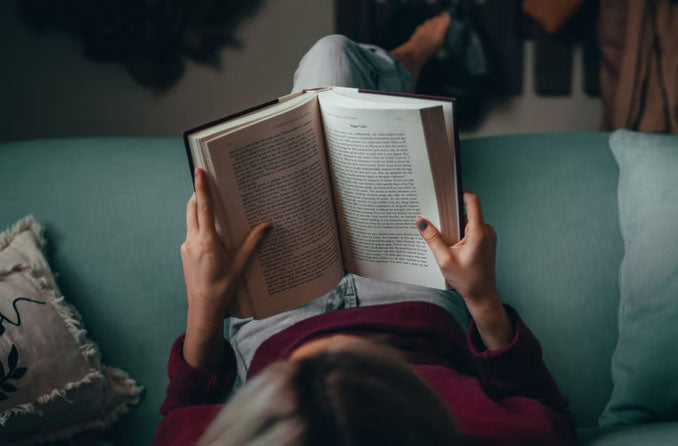
I think we all remember reading under the covers with a flashlight when we were kids. The thrill of getting caught only added to the excitement.
We found out fairly quickly that our parents preferred us not to read under the covers because it hurt our eyes.
But what is it about reading in the dark that hurts our eyes?
While reading in low light will not necessarily cause a decline in vision, it can lead to eye strain. This is because the eyes work harder than usual in a low light environment. The eyes can get tired when they are overworked. This happens when you do challenging visual work, like reading in dim light for a prolonged period of time.
Symptoms of eye strain include tired eyes, itchy eyes, headaches, blurred vision, and increased sensitivity to light. However, this generally isn't a long-term problem.
Difference Between Eye Strain and Eye Damage
Eye damage is a severe issue that can permanently harm your vision. Eye strain, on the other hand, is a temporary problem that can occur from working on a computer or focusing on the small print without adequate lighting.
Here are some things you can do to reduce your chances of developing eye strain:
1. Avoid reading in dim light
Read with adequate lighting. However, too much light can also be a problem. If you read under bright lights, make sure the bulb is not too close to your eyes and take regular breaks from focusing on tiny text.
2. Take frequent breaks
Give your eyes time to rest by taking regular breaks when reading. Breaks are also good for your overall health, so be sure to take them when you can.
3. Blink frequently
Blinking keeps your eyes moist and helps avoid dryness or irritation. It also gives your eyes a chance to rest from focusing on the text. Try to blink at least ten times per minute during reading. If you find that your eyes are irritated or dry, we recommend keeping eye drops or eye spray handy.
4. Use the 20-20-20 rule
Take a break every 20 minutes and focus on an object about twenty feet away for at least twenty seconds. The object should be clearly insight, not blurry or in the distance.
5. Wear glasses if necessary
If your work requires that you look at small objects for long periods, your best option may be to wear glasses. This will help take some of the strain off your eyes.
If you are having trouble with eye strain, consider investing in glasses designed for reading/computer work.
These glasses have lenses that help filter out blue light emitted by computer screens and e-readers. These special glasses are the best for helping reduce eyestrain in people who spend a lot of time reading electronically.
Eyeglasses aren't necessary to protect your vision, but they may be able to help you work more comfortably with less eye strain.
Also, eating well and getting plenty of sleep can help give your eyes some much-needed rest from time to time. You could also supplement your diet with eye vitamins to help maintain healthy eyes.
If you're experiencing fatigue or pain while reading, it's best to contact an optician near you for more advice.







